Introduction
TEMPERA-C is a microwave radiometer designed to measure microwave radiation from oxygen emissions at a frequency of 53 GHz. The resulting microwave spectra are used to retrieve atmospheric temperature profiles up to the mesosphere, reaching altitudes of approximately 60 km. During a test campaign, TEMPERA-C was deployed to take measurements at the Jungfraujoch high-altitude research station. The high elevation of the Sphinx observatory, situated at 3570 metres above sea level, provides an advantageous environment for observations due to the extremely low humidity. This fieldnote details the process of transporting TEMPERA-C to the research station, where it was installed and calibrated.
Planning the expedition
Before relocating the entire instrument to the top of Jungfraujoch, we conducted a thorough inspection of the site where TEMPERA-C would be installed. A small team from our group travelled there a few weeks in advance to take notes and photographs, and to measure every possible dimension with a ruler. These measurements were then used to create a 3D model of the site, and we even digitally simulated the optimal mounting in advance.
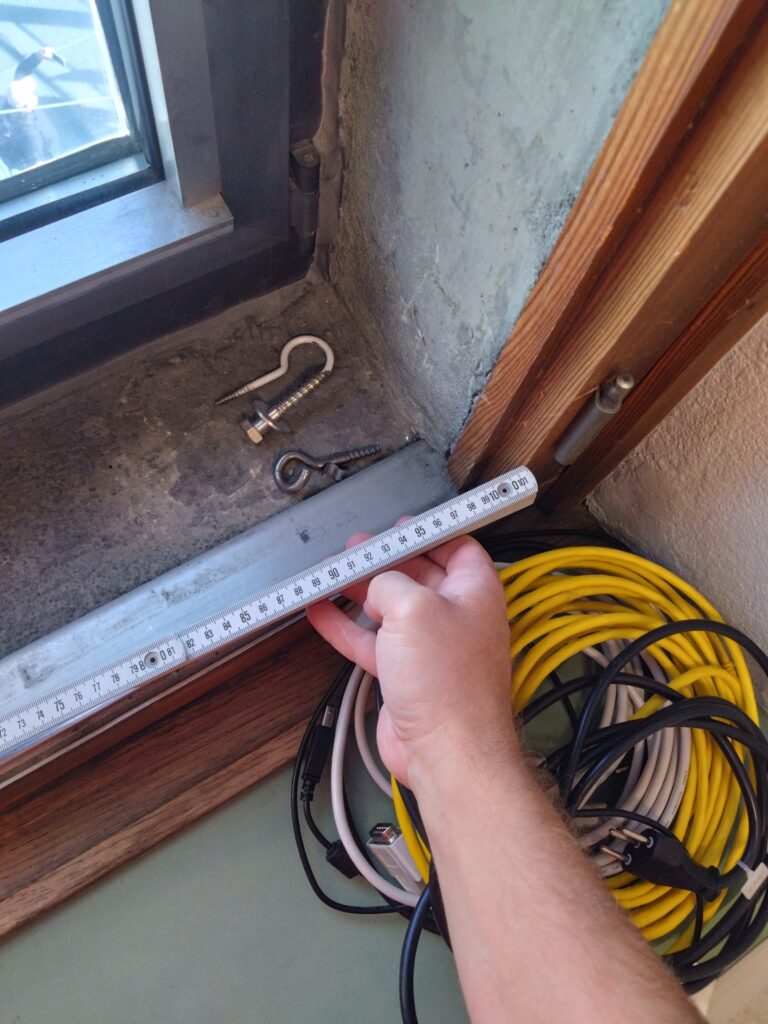
Meanwhile, at the University of Bern’s laboratory, we were finalising preparations and conducting checks on the instrument. Since TEMPERA-C is designed to operate autonomously with minimal maintenance, we needed to ensure it was in perfect condition and functioning smoothly. Given that a radiometer is a highly sensitive instrument, proper calibration is crucial for the success of the entire campaign. This remained a key topic of discussion in the weeks leading up to the campaign.
Calibration involves the use of liquid nitrogen, which is readily available at Bern’s lab but in limited quantities at the observatory. Liquid nitrogen, at a temperature of -196°C, serves as an ideal reference for the lower temperature limit of our sensor. We devised a calibration setup by placing a microwave absorber inside a small styrofoam box filled with liquid nitrogen. This approach allowed us to use only about 3 litres of liquid nitrogen instead of the usual 6 to 10 litres.
Once all the tests were completed and the performance checks were passed, everything progressed quickly. The morning after the final calibration test, we gathered in the electronics workshop, where the aroma of freshly brewed coffee filled the air as we reviewed the previous evening’s results. Since we found no flaws, we scheduled a shipment date for TEMPERA-C for the following week. To keep costs low, we decided to pack everything into suitcases and take the train.
The exhausting journey to the Jungfraujoch high-altitude research station
At half past six in the morning, we gathered in the electronics workshop at the University of Bern, ready to catch the train to Interlaken. TEMPERA-C had already been packed the day before: three large suitcases and five backpacks, one for each of us. Despite the early hour, the train to Interlaken was quite crowded. We stopped at the onboard restaurant for our first coffee of the day to charge our batteries. The ride from Bern to Grindelwald took about 1.5 hours, and while it was calm, we had to keep an eye on our baggage to ensure that no one accidentally placed theirs on top of ours.
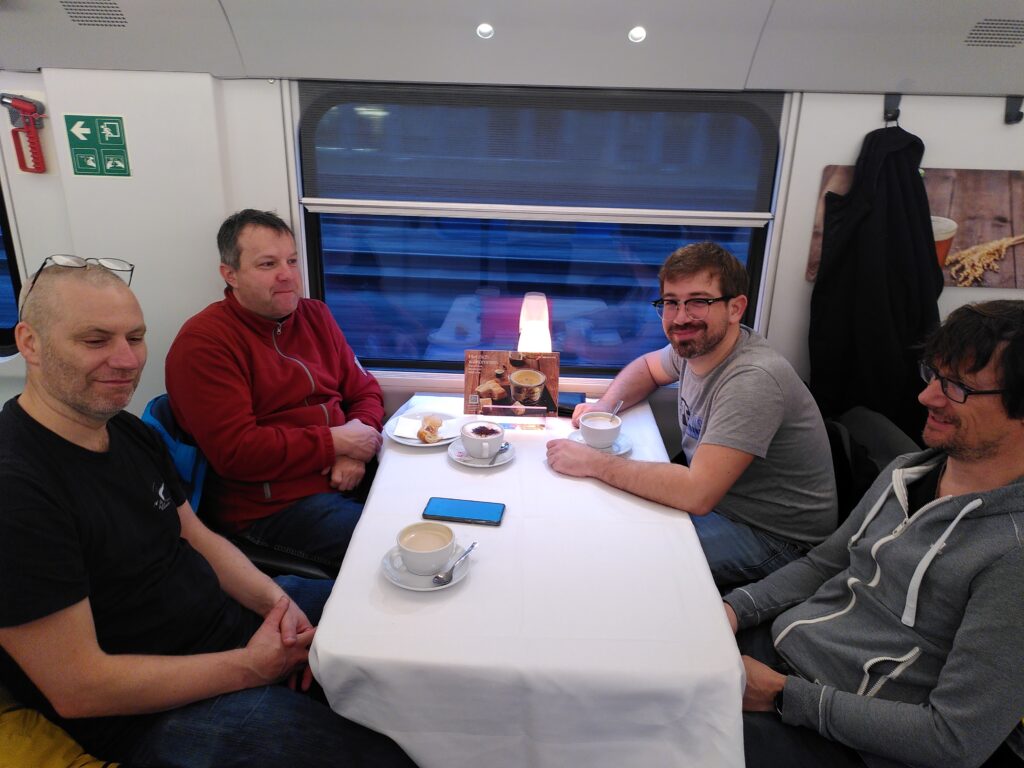
From the Grindelwald terminal, we took a cable car up to Eigergletscher, which was a midway point in our journey. Inside, the high-resolution screens displaying ads for Swiss watches and chocolate created a strange, almost dystopian atmosphere. After about 30 minutes, we switched to a rack railway that would take us to the “Top of Europe.” It was during this final part of the journey that we began to feel the air thinning, and our breaths became quicker and deeper as we climbed higher.
Surviving the wildlands of the Sphinx observatory
At the top station, we had to carefully navigate through groups of tourists who were rushing from shop to shop, pausing only briefly for a quick photo on the outdoor platform before hurrying back to catch the next train down. We entered a vast tunnel system inside the mountain to make our way to the researchers’ accommodations. There, we met Erich Furrer, the operations manager who oversees the research facilities. He is responsible for everything from clearing snow to maintaining the delicate research instruments. Erich had arranged for liquid nitrogen for us and guided us to the spot where we would set up our equipment.
Every detail of the setup had been meticulously planned by Andres and Andre from the electronics workshop. However, a minor obstacle arose when we attempted to replace the glass window with our microwave window. The new window is transparent to microwave radiation while blocking ultraviolet (UV) and thermal radiation. To make the swap, we had to remove the glass, but outside, a fierce snowstorm was raging, with winds blowing ice crystals at speeds of up to 100 m/s. Inside, the lab was filled with highly sensitive gas sensors and a mass spectrometer. Although we managed to shield the incoming wind with a blanket, we had to notify EMPA beforehand to warn them of a possible temperature drop in the lab.
By four o’clock in the afternoon, we had everything set up: electronic components connected, the internet up and running, and a camera installed. It was time to calibrate the instrument. During the installation, a network switch was damaged, and its charging plug completely fell off. Fortunately, thanks to our well-prepared electronics team, we had a soldering iron on hand, allowing us to fix it on-site.
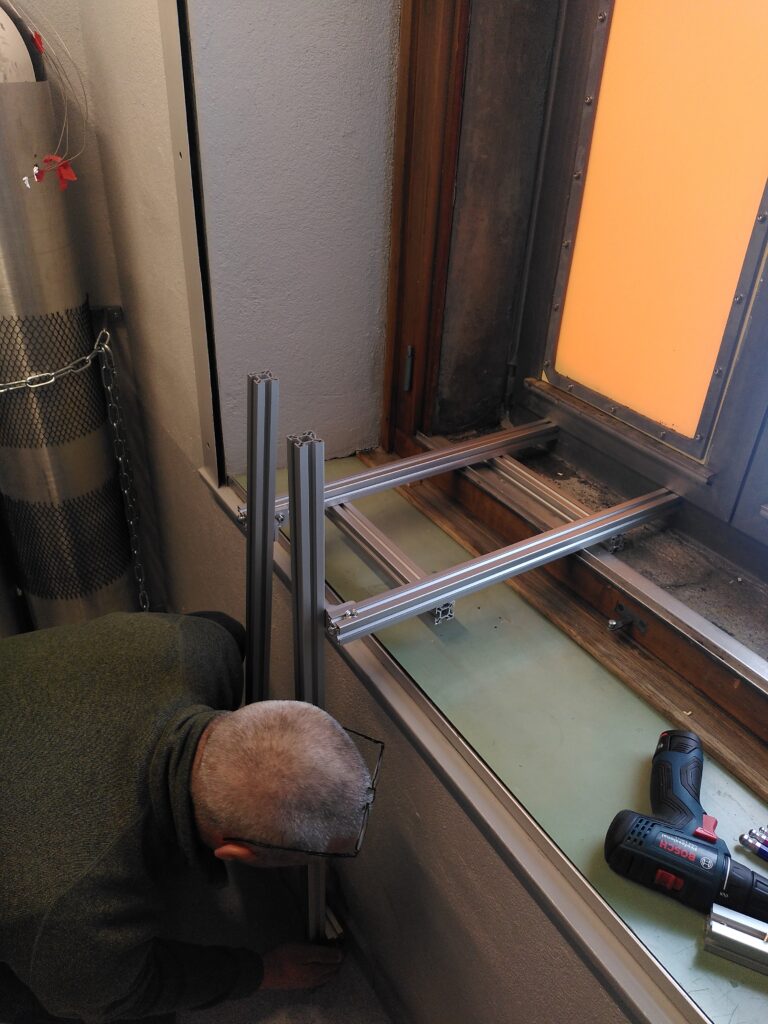
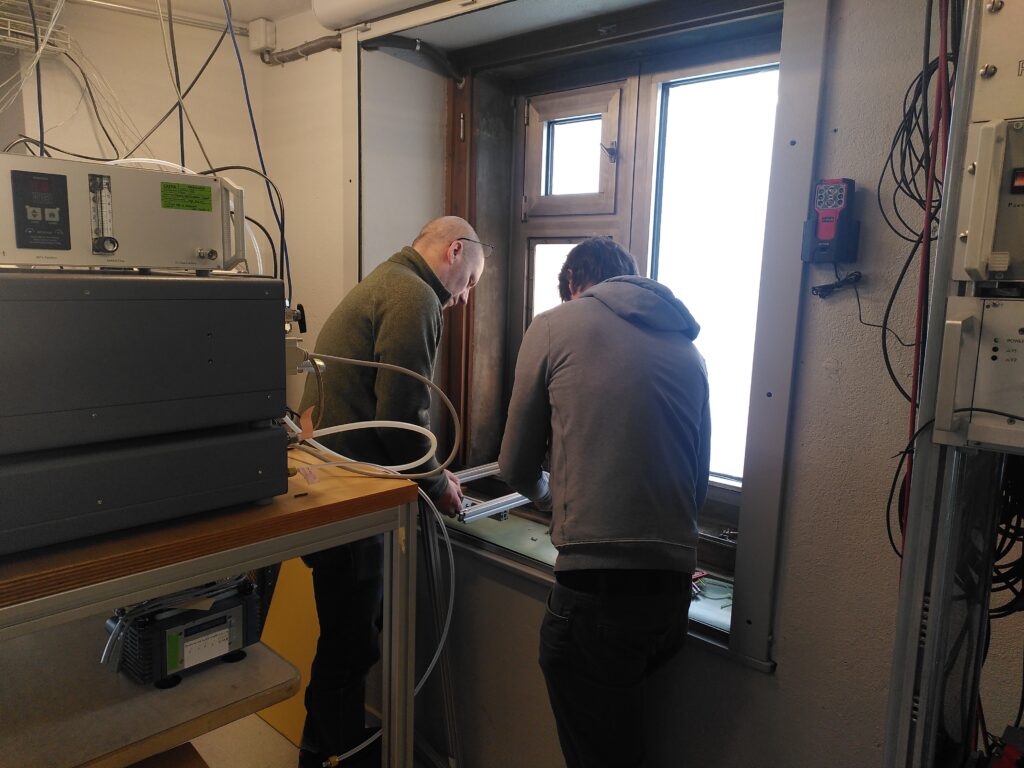
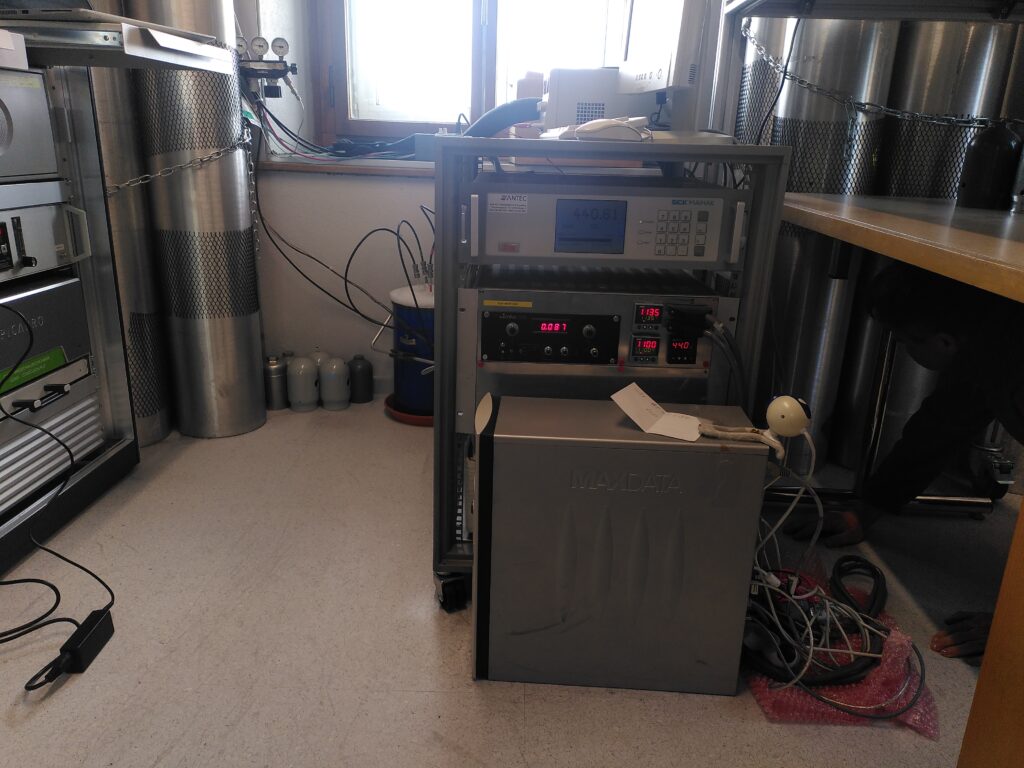
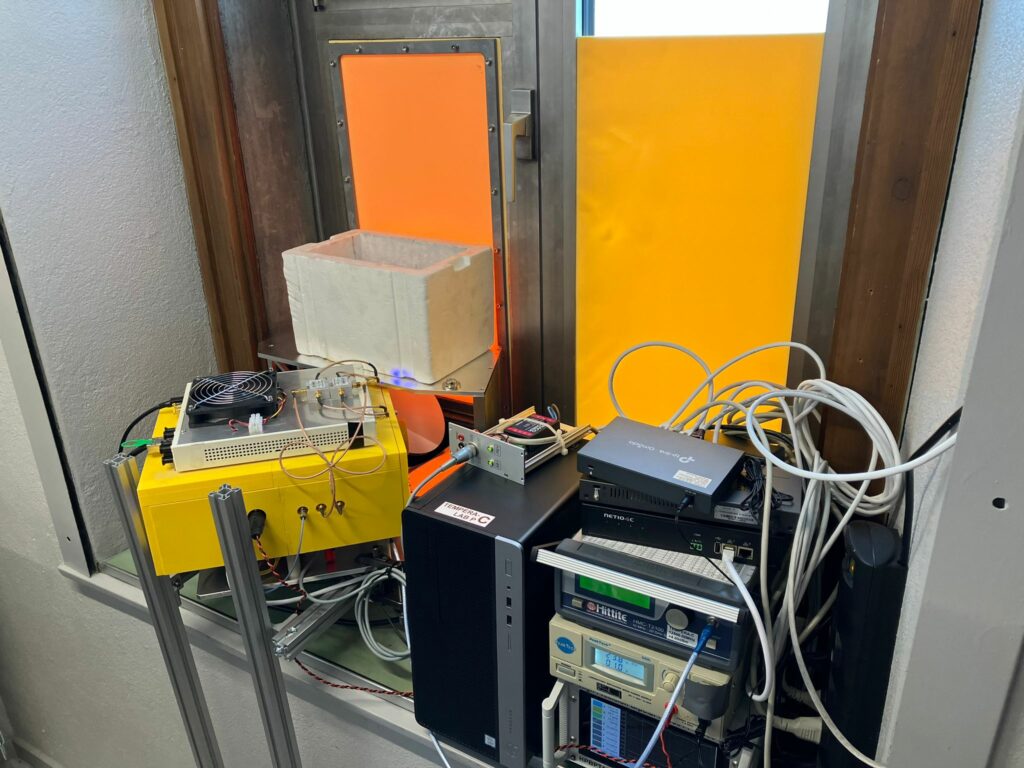
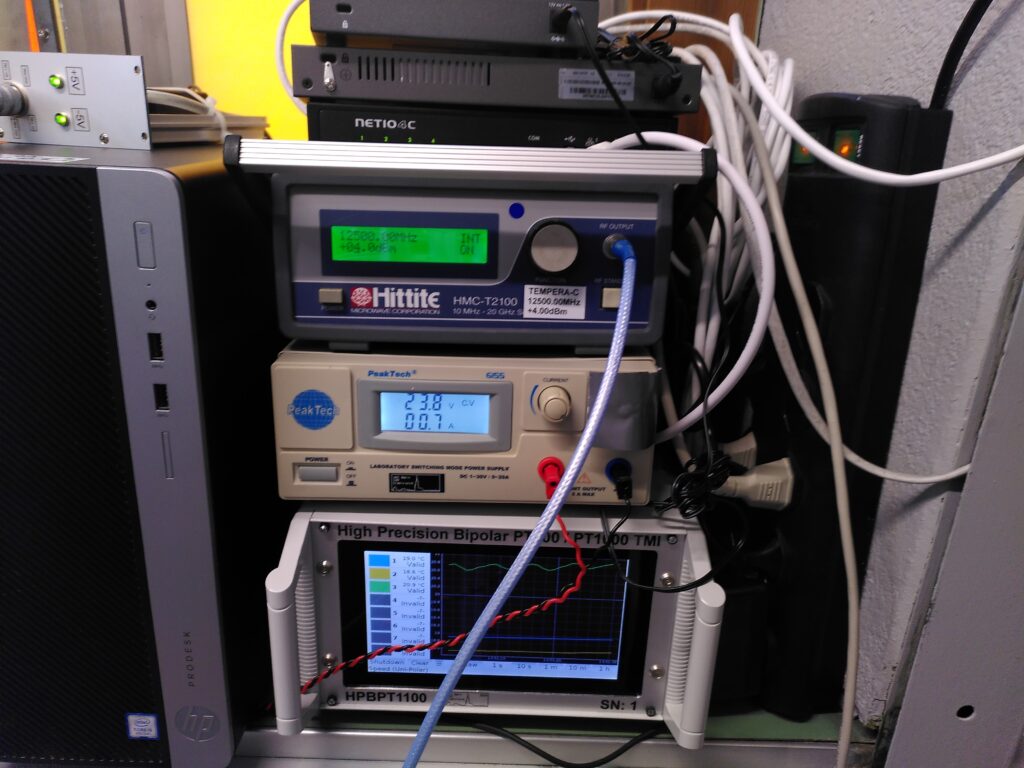
Finding shelter at the research station
After we completed the setup, we began the calibration process. The antenna needed to alternate between pointing at a microwave absorber at room temperature and one soaked in liquid nitrogen for several hours. Once that was done, we checked the results to ensure the instrument was performing nominally. Since the last train departed at 17:00, three of us stayed overnight at the researchers’ accommodation. The space included bedrooms, showers, a kitchen, and a community room where we could have dinner.
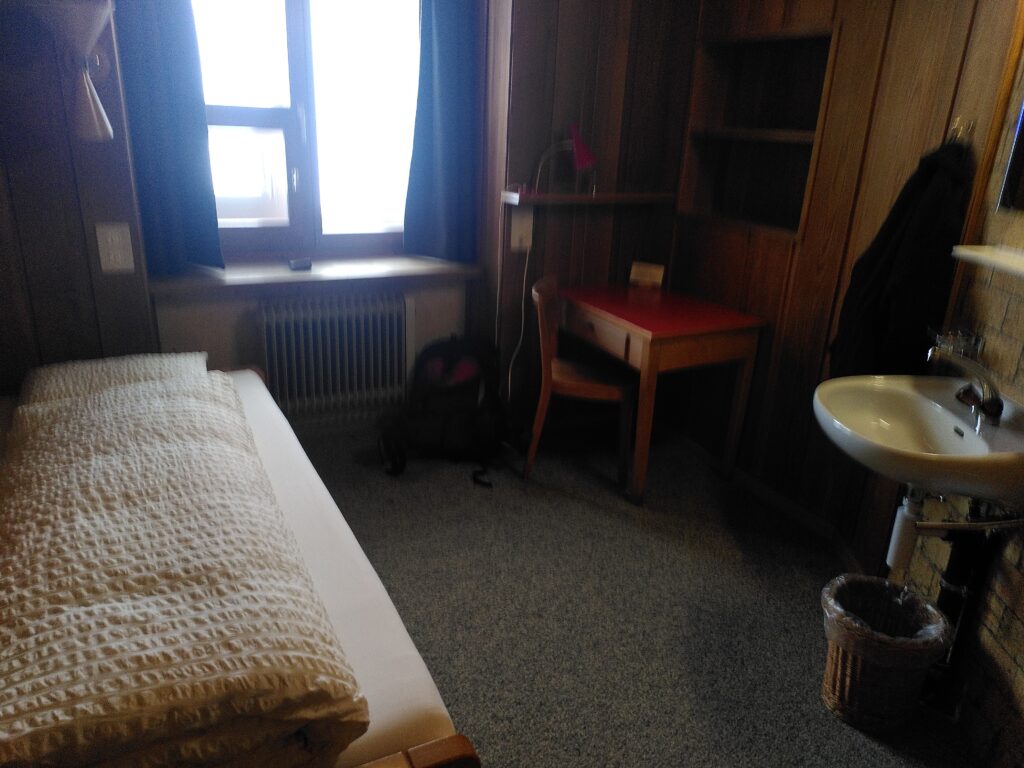
Reviewing the calibration results didn’t seem so challenging back in Bern, but after a whole day at 3570 metres above sea level, every line of code felt like a struggle. Despite this, the calibration appeared successful, so we removed the nitrogen container and began the instrument’s operational measurement mode. We celebrated our success with a glass of wine in the community room. We weren’t the only scientists there, so we took the opportunity to learn about other fascinating research projects. One group was monitoring tiny movements in the glacier using infrared instruments, while a pilot was preparing to fly a photographer around the mountain peaks the next day.
Despite hearing frightening stories about headaches and insomnia at high altitudes, we all made it through the night without any issues. Each of us received an air humidifier to prevent dry throats, and headache pills were available in the hallway. The next morning, we reviewed the measurements over breakfast. It was a historic moment — the first-ever ground-based observations of oxygen microwave emissions at this altitude. The sky had been clear the night before, and the results looked great.
The long way home
The next morning, we simply needed to tidy up our workspace, make sure we hadn’t forgotten anything, and leave the lab as we found it. The storm from the previous day had passed, and the weather was clear. We took the opportunity to capture a few photos of the breathtaking view before heading back to Bern.
The return journey was similar to our arrival;, we were once again greeted by loud advertisements for watches and chocolate, however, this time without our heavy luggage. Reflecting on the trip, I remember feeling energised and almost invincible that evening. After spending a day at an altitude of 3570 metres, breathing at the regular oxygen levels in Bern felt like a superpower.
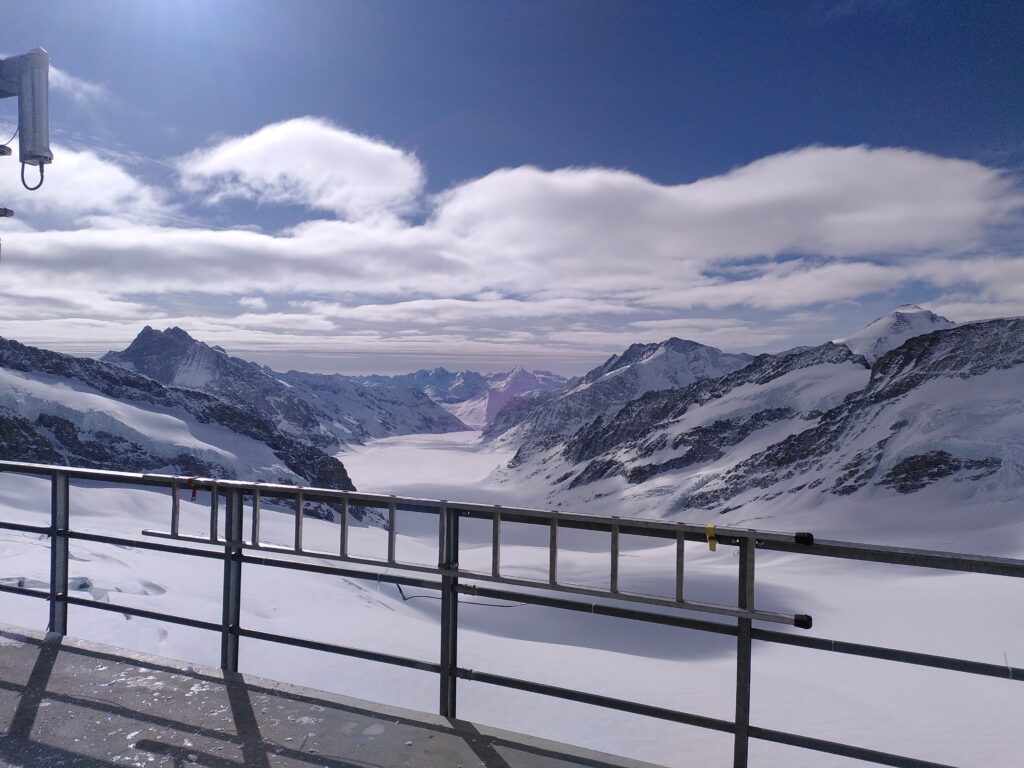
Gunter Stober is Head of Atmospheric Dynamics and Meteor Physics Group and Witali Krochin is a Postdoctoral Researcher at the Institute of Applied Physics at the University of Bern, Switzerland. Their field trip took place with financial support of an SPI Technogrant.